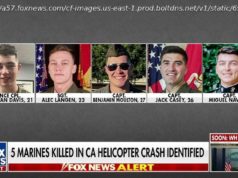By invoking the word yesterday, Trump erased the purpose of demonstrators across the country. The media should not follow suit.
On Monday evening, in Washington, D. C., a crowd of people protesting the killing of George Floyd were gathered in Lafayette Square, on the north side of the White House. Agents of the state outfitted in riot gear marched up to the group. Mounted police officers formed a barricade in the street. The protesters, their hands raised, chanted: “Don’t shoot.”
The police shot anyway: rubber bullets. Tear gas. The people, turned into targets, ran. CNN reported on the scene, its anchors noting repeatedly how peaceful the protesters had been before their taut peace was broken. And then the network switched to a split screen. On the one side were the protesters, fleeing the militarized police. On the other side was Donald Trump, who had blocked the evening hour to deliver a speech from the White House’s Rose Garden. In it, he threatened to invoke the Insurrection Act, an 1807 law, to deploy federal forces against the protests that have risen in cities across America. He declared his intention to “dominate the streets.”
What soon became clear was that the two events were perversely connected: Why were peaceful protesters being tear-gassed, on national TV? Because Trump and his aides—nearly all of them men and every one of them white—had decided to punctuate his speech with a walk across Lafayette Square to a church where Trump posed, clutching a Bible. What became even clearer, though, was that the Bible-posing was not the photo op the Trump administration was aiming for; it was the clearing of Lafayette Square that was. The video that played out on CNN’s split screen was a document of state power in action: the president, his will made manifest; the protesters, their eyes reddened from tear gas, forced to make way for the leader.
How do you capture the enormity of those events in a headline? How do you sum up the urgent threat to civil rights, the Riefenstahlian logic of the spectacle, the “American carnage” remade as a self-fulfilling prophecy? On Tuesday, the New York Times’s website tried to contextualize the day’s events with the following banner: “As Chaos Spreads, Trump Vows to ‘End It Now.’” The summary was ostensibly meant to capture the split-screen collisions of Trump’s speech: protests against the impunity of state violence meeting the state itself. What the headline did instead, however, was to erase the violence that had just occurred. With the efficiency of a single word, the American paper of record took the purpose of the Lafayette gathering in the first place—the protest of the killing of George Floyd—and erased it in the fog of “chaos.






